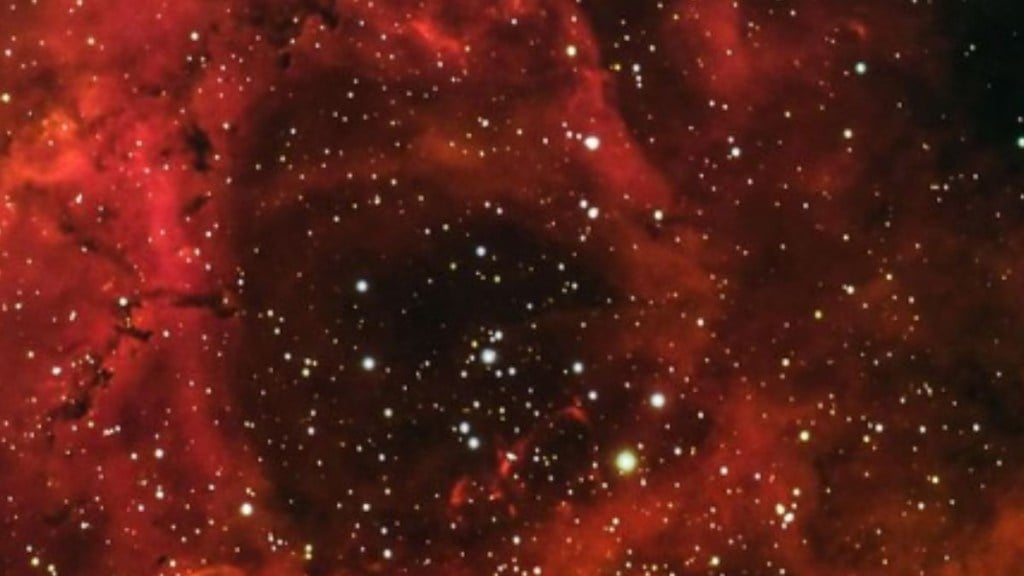In our sky, there are many amazing things, but one that’s grabbed people’s attention is the Rosette Nebula. It’s like a big cloud that looks like a rose and is about 5,200 lightyears away. This cloudy thing is connected to a group of stars called NGC 2244.
This rosy cloud is at one end of our Milky Way Galaxy. It’s a bunch of stars that came from the stuff in the nebula, called “Nebulosity.”
The stars in this cloud give off energy that makes the things around them light up. The reason this cloud looks red is that the light from these stars takes electrons away from hydrogen atoms in the cloud.
Inside this nebula, some cool things are going on, like baby stars that haven’t fully formed yet, jets of gas and dust, and small clouds holding stars that haven’t born yet.
The Rosette Nebula has dark, cloud-like shapes made by strong winds from the sun and nearby stars. The sun also sends out a lot of energy. Other forces in space also help make these trunk-like shapes in the nebula.
The rose shape of the nebula happens because of the winds from stars, the energy they send out, and other things we can’t see in space. It’s like nature making interesting shapes in space.
This Rosette Nebula, also known as Caldwell 49, is in a part of our Milky Way Galaxy called the Monoceros region. It’s famous for looking like a rose or sometimes even a human skull, which is why some people call it the “Skull Nebula.”

